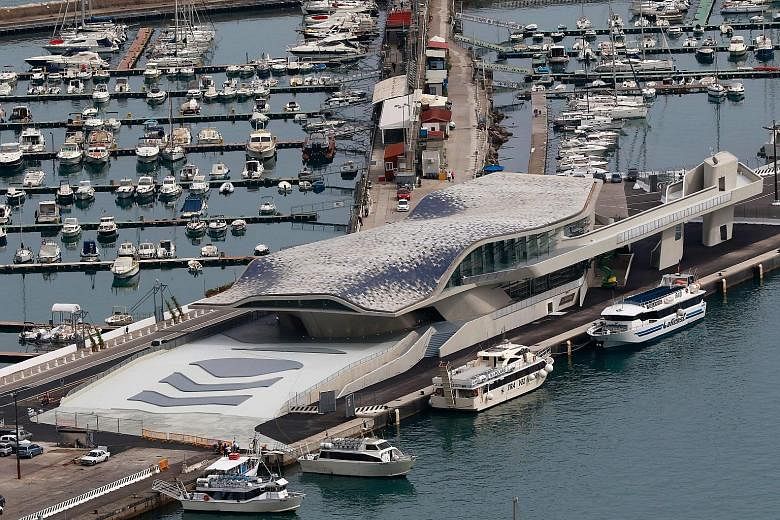SALERNO, ITALY • Cruise ships regularly disgorge thousands of passengers to visit attractions beyond the docks. But in the case of Salerno, this ancient Italian city of 133,000 people south of Naples, the first must-see site may soon be the maritime terminal itself, created by Iraq-born British architect Zaha Hadid and inaugurated on Monday.
On the long approach from the sea, the flowing, horizontal silhouette of this all-concrete structure, bracketed by leaning walls, stands out from the heavyset classicised buildings along the waterfront promenade. Thinking of that distant view across water, visualising the possibilities, Hadid had scoped out the site from a police boat before finalising the design that won a 2000 competition.
Prime Minister Matteo Renzi visited the site on Sunday, calling it a masterpiece. The absence of Hadid, 65, who died on March 31 without ever seeing the finished terminal, was keenly felt.
In a valedictory tribute, Salerno has honoured her with a portrait posted throughout the city and half of her 400-person office flew in from London to celebrate the work.
In a country where regions and cities have developed strong identities over centuries, Mr Vincenzo de Luca - until recently the mayor of Salerno and now the governor of the Campania region - was looking for a functional building with a strong presence that would express the city's individuality. As a matter of urban planning policy, beauty mattered.
As seen from the sea and the waterfront promenade of the crescent bay that curves into the distance, Hadid's rippling roof parallels the horizon line of the water and captures a sense of flow and movement. Both ends of the building lean out like prows, recalling ships and energising the silhouette. At night, the lit building glows like a lantern.
Inside, the building is an intricate gavotte of interlocked functions, juxtaposed ramps and balconies. "We thought of the building as an oyster, with a hard-shell top and bottom, and a softer, liquid, more organic interior," said project architect Paola Cattarin.
After showing their passports and tickets, departing travellers step onto gently sloping ramps that swoop through the cavernous entry hall, connecting the upper level to the dock level below. The paths are self-guiding, with slopes and sightlines cueing visitors. Ramps and walls relate to one another, curves sweeping against curves in a rich interplay entirely at home in a country that invented Baroque space.
The on-again-off-again construction process lasted over a dozen years. Ms Cattarin attributed delays to contractor bankruptcies, extended bidding periods, funding delays and a slow bureaucracy - the process gave renewed understanding to why Rome was not built in a day.
NEW YORK TIMES

